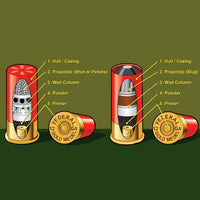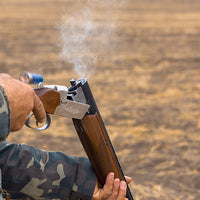Shotgun gauges can be a maze of confusion, but understanding them is key to becoming a proficient hunter or shooter. From the thunderous 10 gauge to the nimble .410 bore, each gauge has its place in the field. Let's dive into the world of shotgun gauges, shedding light on their history, differences, and optimal uses in a concise and engaging way.
The Origins of Gauges
The concept of shotgun gauges is steeped in history, dating back to when firearms and cannons were classified by the weight of the projectile they fired. This old system, confusing at first glance, explains why a smaller gauge number means a bigger bore diameter. The .410 bore, an outlier, is the only shotgun named after its actual bore size, offering a unique exception to the gauge rule.
Gauge Sizes and Their Secrets
- **10 Gauge**: The powerhouse, favored by waterfowl hunters for its ability to deliver heavy shot loads. Its significant recoil, however, makes it less appealing for casual use.
- **12 Gauge**: The jack-of-all-trades, this gauge reigns supreme in versatility. Whether for hunting, home defense, or sport, the 12 gauge offers a balanced mix of power and manageability.
- **16 Gauge**: Once more popular, the 16 gauge has seen a decline, especially in North America. It's a middle ground option, offering slightly less recoil than the 12 gauge but with ample power for most hunting needs.
- **20 Gauge**: The choice for upland hunters and those seeking a lighter recoil. It's also increasingly popular for waterfowl hunting, thanks to advances in non-toxic ammunition.
- **28 Gauge**: A specialist's choice for upland game and skeet shooting, delivering a gentle recoil without sacrificing effectiveness.
- **.410 Bore**: Perfect for beginners or those looking for a challenge, the .410 bore is effective at close ranges and is favored for small game hunting.
Nominal vs. Actual Bore Size
While shotgun gauges are categorized by nominal sizes, the actual bore diameter can vary. This discrepancy is minor, thanks to manufacturing standards that ensure safety and compatibility.
The Art of Choosing the Right Gauge
Selecting the appropriate gauge is crucial. It's about matching the shotgun to the game, considering factors like recoil, shot pattern, and the hunter's physique. The 12 gauge, with its versatility, is often the go-to choice for most hunters. For those sensitive to recoil, the 20 gauge offers a gentler alternative without significant compromise on effectiveness.
Conclusion
In the quest for the perfect shotgun, understanding gauges is fundamental. Whether you lean towards the robust 10 gauge for waterfowl or the more forgiving .410 bore for small game, the key is finding the gauge that aligns with your hunting preferences and physical comfort. The 12 and 20 gauges stand out as versatile choices, capable of meeting most hunters' needs with a balance of power, pattern, and recoil. Choose wisely, and may your hunting adventures be both successful and enjoyable.




